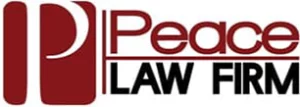ERISA Plan Document Requirements

Understanding the terms and limitations of an employer’s benefit plans is crucial for employees to make informed decisions about their health and financial well-being.
That’s why a federal law known as ERISA requires employers to provide plan participants with detailed information about their group benefits plans. Employers failing to follow ERISA’s regulations can face legal penalties for oversights.
Today, we’ll look at an overview of the ERISA plan document requirements for employers and plan administrators. We’ll look at the key documents ERISA requires, what they include, and offer some tips for managing them.
Understanding ERISA Plan Documents
The Employee Retirement Income Security Act (ERISA) is a federal law that regulates employer-sponsored retirement, health, and other benefits plans. Under the law, private employers who provide group benefit plans must maintain certain documents outlining the terms, conditions, and limitations of the benefits they provide.
Employers must prepare these documents for each welfare benefit plan they offer, e.g., retirement, health, long-term disability, etc. ERISA also requires that each plan document associated with a given benefit plan be put in writing.
Let’s examine the different plan documents employers are responsible for and the rules for maintaining them.
ERISA Plan Document
The ERISA plan document is a comprehensive source of information about how a benefit plan operates. It’s a formal and highly detailed document. By law, it must include:
- The name of the plan administrator;
- Description of the benefits provided;
- Participant eligibility rules;
- Effective date;
- Claims procedures;
- Cost of coverage;
- Plan termination procedure;
- Funding details;
- Policy for insurer refunds;
- Names of other relevant fiduciaries; and
- Information about participant rights under HIPAA, COBRA, and other federal mandates.
Employers are required to consistently maintain and update a written plan document for each welfare benefit plan they offer. However, they don’t have to provide it unless an employee asks for it. Once a plan document is requested, the employer has 30 days to deliver it to the employee or face a fine.
Summary Plan Description (SPD)
A Summary Plan Description is a simpler and clearer version of the plan document. It contains much of the same information found in the plan document but in language that is more accessible for the average person to understand. Like the plan document, the SPD outlines the basic rules, eligibility requirements, benefits, and claims procedures involved in a given plan.
Unlike the plan document, the SPD must be given to employees whether or not they request it. Employers must provide new employees with a copy of the SPD for any benefits plan they’re enrolled in within 90 days of the beginning of coverage.
Benefits Summary
As its name suggests, an ERISA benefits summary is a document that specifically outlines the benefits and coverage included in a given plan. The benefits summary aims to help employees understand in detail the coverage options available to them. It also generally offers employees information about who to contact with questions and concerns about their coverage.
The benefits summary is typically distributed to employees who want to start a new health plan during open enrollment. However, employers aren’t required to provide it unless an employee requests a copy.
Although the benefits summary contains information included in the plan document and SPD, employers must maintain it as a separate document to be ERISA compliant.
Tips for Managing ERISA Plan Documents
Staying on top of ERISA plan document requirements often poses challenges for employers and plan administrators. Here are some suggestions to keep in mind when handling plan documents:
- Understand each document’s purpose. Each ERISA plan document has a specific aim and can’t be replaced by another one, even if some information is repeated. It’s essential for each welfare benefit plan to have its own version of each of the plan documents listed above.
- Don’t assume compliance. The documents provided by an insurance company aren’t a substitute for ERISA plan documents. An insurer’s Master Contract, Certificate of Coverage, or Summary of Benefits alone doesn’t meet the requirements for ERISA compliance.
- Consider “wrap” documents. Wrap documents streamline information from multiple benefit plans into a single document, and they “wrap” around existing documents (e.g., a Certificate of Coverage) and supplement them with the missing provisions ERISA requires. If done correctly, this can ease the administrative burden of preparing multiple plan documents for each separate plan.
Maintaining proper ERISA documentation is required by law. Employers who cut corners when preparing documents or providing them to employee participants can face financial and legal penalties.
Professional Support for Your ERISA Rights and Benefits
Navigating ERISA’s rights and requirements can be daunting. However, employer plan administrators have a legal responsibility to keep employees adequately informed about the details of the benefit plans they manage. If you’re an employee who’s struggled to get the information you’re entitled to from your employer, you don’t have to remain in the dark.
The Peace Law Firm has spent almost two decades helping South Carolina employees understand and exercise their ERISA rights. Attorney John Peace has extensive experience representing employees through various ERISA-related disputes, and he’s prepared to help you. Contact our office to schedule a free, no-obligation consultation.
